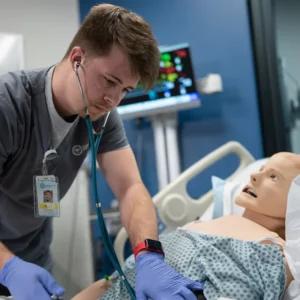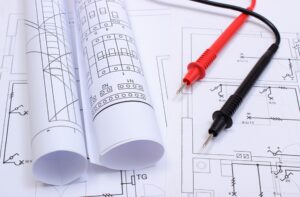 While your classes in different realms of medicine will qualify you to become a medical assistant, you’ll still likely be surprised by some of the practices you engage in during your actual employment. Though this disconnect in understanding can be somewhat worrisome, there’s no need to fret about whether or not you’ll be ready for the job when the time comes. As long as you develop an understanding of the basics entailed by the profession, you’ll be ready to take it on when the time comes. Take a look at some of the daily routines, responsibilities and activities engaged in by certified medical assistants to get a jumpstart on your professional experience.
While your classes in different realms of medicine will qualify you to become a medical assistant, you’ll still likely be surprised by some of the practices you engage in during your actual employment. Though this disconnect in understanding can be somewhat worrisome, there’s no need to fret about whether or not you’ll be ready for the job when the time comes. As long as you develop an understanding of the basics entailed by the profession, you’ll be ready to take it on when the time comes. Take a look at some of the daily routines, responsibilities and activities engaged in by certified medical assistants to get a jumpstart on your professional experience.
Administrative or office-based tasks
Often, the biggest thrill of being a medical assistant is that they will get to experience face-to-face interaction with patients in a clinical setting. However, there will also be daily administrative tasks that can’t be ignored. According to The SR Education Group, medical assistants can expect to be involved with their office practices records, bookkeeping and correspondence.1 This may include such tasks as scheduling appointments and tracking cancelations, working with electronic health records systems, transcribing medical documents and maintaining patient records.
Preparing for patient experiences
One of the largest misconceptions about being a medical assistant is that all of the work you do with a patient will be during their actual procedures. With that said, you should account and prepare for the fact that you will spend a great deal of time preparing for and optimizing patient experiences. Aside from the administrative work detailed above, eMedical Assistants has indicated that this will involve work such as preparing patient rooms.2 For example, if a given patient is coming in for a scheduled surgical procedure, it may very well be the responsibility of the medical assistant to ensure that the proper equipment and tools are ready for the doctor and in the allocated space before the patient arrives. In preparation for this, some of your education will center on gaining familiarity and expertise with medical equipment as well as which pieces are required for which procedures. It’s important to note here that these processes will vary somewhat between different practices, so switching jobs may require you to learn a new system.
Working with families of patients
Working with the families of your practice’s patients is one of the most challenging experiences you will have as a medical assistant, but it also has the potential to be the most rewarding. As a medical assistant, the odds are high that you will be involved in providing comfort, care and reassurance to family members when their loved ones are receiving treatment. This process will vary depending on the procedure being undertaken and its level of severity, but will require strict attention to patient data and health records as well as clear and constant communication with doctors. Shadowing medical professionals or completing an internship during your time as a student is a great way to prepare for this aspect of the job.
1) The SR Education Group, ‘Daily Responsibilities of the Clinical Medical Assistant,’ 2014,http://www.collegesanddegrees.com/programs/medical-assistant/tasks
2) Otto, Elizabeth, The eMedical Assistants, ‘What is a Typical MA Workday Like?,’ 2015, http://theemedicalassistants.com/what-is-a-typical-ma-workday-like/



